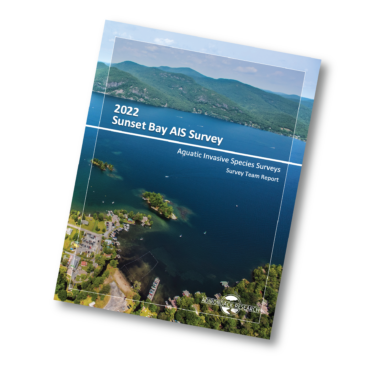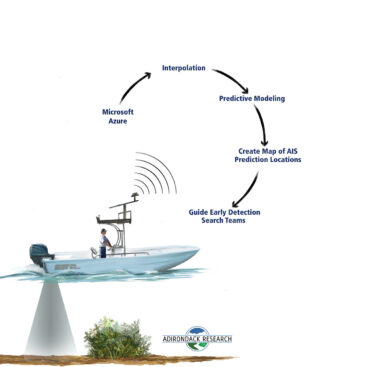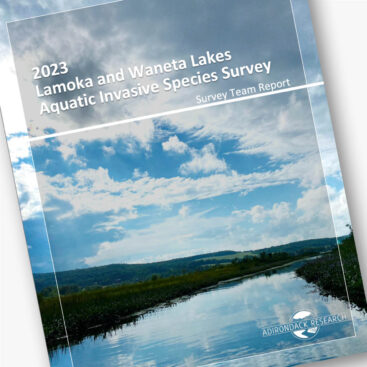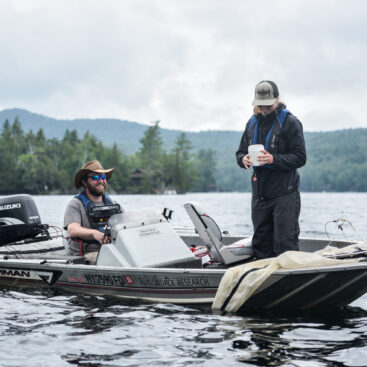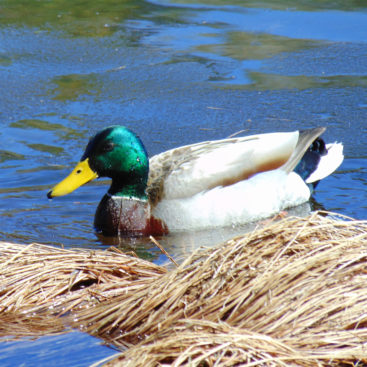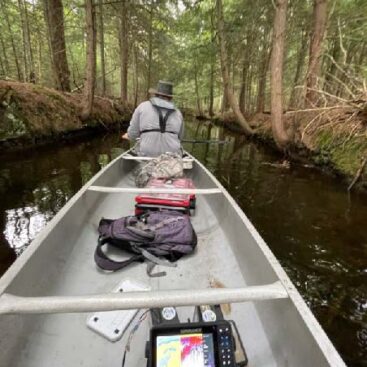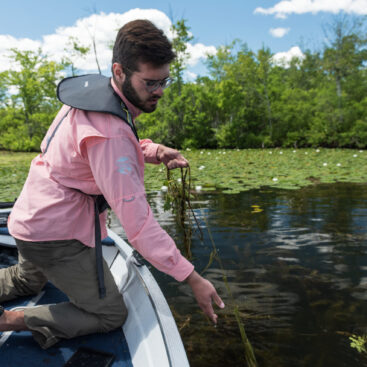In 2022, Adirondack Research, a private research and mapmaking firm constituted the Capital Region PRISM’s Aquatic Invasive Species (AIS) Early Detection Team. The team surveyed prioritized lakes and ponds in the Capital Region PRISM with a focus on discovering and documenting new populations of tiered AIS species of concern and utilizing data collected in the field to produce individualized maps documenting AIS distribution, bottom sediment hardness, and bathymetry.
In this report, we address the results of this year’s work along with recommendations for continuing and adapting the survey strategy to enhance early detection and rapid response capabilities as well as ways to continually improve ongoing efforts to address AIS impacts in the Capital Region.
Results
Between June 27th and August 18th, eight lakes and ponds were surveyed with the objective of AIS early detection. Of the eight lakes surveyed, five contained at least one AIS, with a total of six specific occurrences. Four lakes where AIS were detected in 2022 had been previously documented as invaded. One new AIS discovery was made, Dreissena polymorpha (zebra mussels) were detected in Round Pound, Warren County. One lake, (Crystal Lake, Rensselaer County) was previously invaded with Eurasian watermifoil was found to have no invasives this year. This is one case where a previously recorded invasive species was no longer present. Myriophyllum spicatum (Eurasian watermilfoil) and Potamogeton crispus (curly-leaf pondweed) were the most common AIS found in 2022, they were detected on three different occurrences each. No new “High Threat” or “Very High Threat” AIS were observed from the AIS Species of Concern List other then Dreissena polymorpha (zebra mussels). A total of three different AIS species were found this year. The 2022 Early Detection Team surveyed total of 786.7 acres and 27.8 miles of shoreline. Lakes surveyed ranged in size from 29.5 acres (Round
Pond) to 247.7 acres (Burden Lake 3).
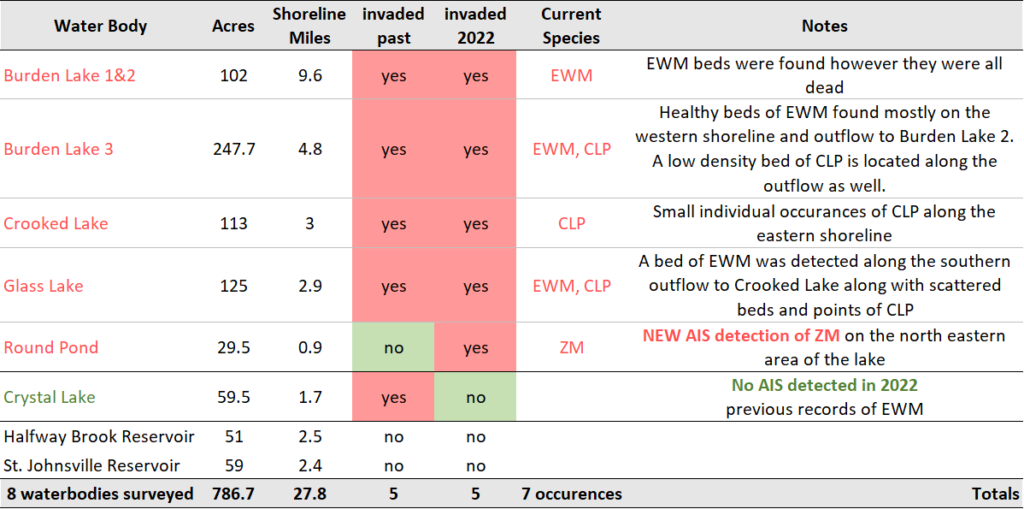

Each lake description is followed by 1-2 maps. The first map, if aquatic invasive species were detected in the lake, is the “AIS Map” and shows presence of aquatic invasive species (AIS) beds and points overlayed on a bathymetry map. Points are labeled directly on the map and consist of individual plants. Polygons denote beds of invasive species. These polygons are labeled with numbers that correspond to a bed density and size in both acres and square feet in the facing table. The tables have only polygon data and do not include individual plant occurrences, which are denoted only with a point and acronym on the map. The acronym is listed in each map legend.
Acknowledgements
The Capital Region PRISM, a program hosted by the Cornell Corporation Extension of Saratoga County, is one of eight PRISMs in New York State whose mission is to protect the Capital region from the negative impacts of invasive species. The Capital Region PRISM contracted Adirondack Research during the 2022 field season to conduct AIS early detection surveys on 8 lakes in the Capital Region. Field work, data collection and the compilation of the narrative, maps and materials included in this report were conducted by Carrie Griffo, Kevin Dernier, Mia Walton, Masen Sharpe, Meghan Bargabos, and Dr. Ezra Schwartzberg, who constituted the Capital Region Early Detection Team. Project planning and lake prioritization was conducted by Kristopher Williams, Invasive Species Coordinator of the Capital Region PRISM. Completion of this project would not have been possible without members of lake associations, businesses and other agencies: Capital Region PRISM, Kristopher Williams, Cornell Cooperative Extension, Crooked Lake Association, Glass Lake Association, Crystal Lake Association, Crystal Cove Venue, Burden Lake Conservation Association, Burden Lake Association, Glens Falls Country Club, Village of St. Johnsville Public Works, Glens Falls Water and Sewer Department. We are grateful for their role in protecting many of these important Capital Region lake ecosystems.



